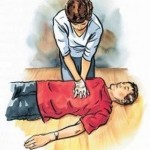Importance of Basic First Aid Skills for Students
The ability to perform first aid can make a significant difference, especially in environments where professional medical help may not be immediately available. Students spend considerable time in school, where accidents and health emergencies can occur. By learning first aid, students become valuable first responders, capable of stabilizing situations until professional help arrives. This proactive approach enhances student safety and fosters a sense of responsibility and community awareness.
Benefits of First Aid Certification for High School Students
The benefits of first aid certification for high school students are manifold.
First Aid Certification Saves Lives in Schools
First aid certification for student safety in emergencies is a critical aspect of school programs for student first aid certification. Schools are environments where numerous activities occur, from sports to laboratory experiments, increasing the likelihood of accidents and injuries. When students are certified in first aid, they become an integral part of the safety network within the school.
In emergencies, every second counts. Students with first aid certification can provide immediate care, such as performing CPR, stopping bleeding, or managing fractures, which can significantly improve the outcome for the injured person. Their quick and efficient action can be the difference between life and death in critical situations.
Builds Confidence and Preparedness
Basic first aid skills instill a sense of confidence and readiness, enabling students to handle emergencies calmly and effectively. The knowledge gained through first aid certification allows students to act swiftly and appropriately in various situations, from minor injuries to more severe incidents.
Additionally, first aid certification fosters a sense of empathy and compassion. Students trained in first aid are more likely to assist others in need, promoting a culture of care and support within their communities. This skill set is invaluable, as it encourages students to be mindful of the well-being of those around them.
Develops Critical Thinking and Problem-Solving Skills
First aid training requires students to assess situations quickly and make decisions under pressure. This practice enhances their critical thinking and problem-solving skills, which are valuable in academic and real-life scenarios.
Moreover, the skills gained through first aid training extend beyond emergencies. Students carry this sense of assurance into other areas of their lives, feeling more capable and empowered to face challenges. This boost in self-esteem can lead to improved academic performance, enhanced social interactions, and greater overall personal development.
First Aid Certification Enhances Student Resumes
First aid certification enhances student resumes by demonstrating a commitment to safety and personal development. In today’s competitive world, students need to stand out, and having first aid certification is a valuable addition to their credentials. It shows that the student is responsible, proactive, and capable of handling emergencies, qualities that are highly regarded by both educational institutions and employers.
Employers also value first aid certification, especially in fields where safety and emergency response are critical. Students with first aid certification have an advantage when applying for part-time jobs, internships, or future careers. It indicates that they have practical skills that can be applied in various settings, making them more attractive candidates.
Supports Community and Individual Health
When more individuals are trained in first aid, the overall health and safety of the community improve. Students with first aid certification can assist in their schools, homes, and neighborhoods. This widespread ability to provide immediate care can lead to better health outcomes and a more resilient community.
In addition, first aid certification courses often include education on health and safety practices. This knowledge can inspire students to adopt a more health-conscious lifestyle and understand the importance of injury prevention and overall well-being.
Online First Aid Certification for Students
With the advent of technology, obtaining first aid certification has become more accessible through online courses. Online first aid certification offers students a flexible and convenient way to learn essential skills without disrupting their academic schedule. These courses entail comprehensive training, covering all aspects of first aid, from basic care to advanced techniques.
Online certification programs typically include interactive modules, video demonstrations, and assessments to ensure students thoroughly understand the material. This format enables students to learn at their own pace, revisit complex topics, and practice their skills in a simulated environment.
Moreover, online first aid certification is often more affordable than traditional in-person courses, making it accessible to a broader range of students. This affordability and convenience of online learning ensures that more students can benefit from first aid training, enhancing overall student safety and preparedness.
Affordable First Aid Certification Courses for Students
Affordable first aid certification courses are essential to ensure that all students have the opportunity to learn these vital skills. Many organizations, including Simple CPR, offer cost-effective training programs tailored specifically for students. These courses provide high-quality instruction without the financial burden, making it feasible for schools and parents to invest in their children’s safety education.
Simple CPR is a leading provider of first aid certification, offering a range of courses designed to meet students’ needs. Our programs are structured to provide thorough training in a user-friendly format, ensuring that students can easily grasp and apply the skills taught.
We offer online certification courses covering a broad range of topics, from basic first aid and CPR to specialized training for specific emergencies. Our all-encompassing approach ensures that students are well-prepared to handle various situations they might encounter.
Our courses are also accredited, ensuring that educational institutions and employers recognize and respect the certification received. This accreditation adds value to the certification, making it a credible addition to the student’s resume.
First Aid Certification Age Requirements for Students
The appropriate age for obtaining first aid certification varies depending on the training program and the student’s ability to understand and perform the required skills. Generally, students as young as 12 can start learning basic first aid techniques. These early courses focus on age-appropriate skills, ensuring that younger students can comprehend and execute basic emergency responses.
As students progress in age, the complexity and depth of the training can increase. High school students, typically aged 14 and above, are suitable candidates for more comprehensive first aid certification courses. At this age, students have the cognitive and physical abilities to learn advanced techniques, such as CPR and the use of automated external defibrillators (AEDs).
It’s essential for schools and parents to consider the maturity and readiness of the student when enrolling them in a first aid certification course. Tailoring the training to the student’s age and capabilities ensures that they can effectively retain and apply the skills learned.
The Process of Renewing First Aid Certification
Renewing first aid certification is a crucial aspect of maintaining preparedness. Skills learned during the initial training can diminish over time, making it essential to refresh and update one’s knowledge regularly. The renewal process ensures that students remain competent and confident in providing effective first aid.
Typically, first aid certification needs to be renewed every two years. The renewal process involves taking a refresher course that covers the latest guidelines and techniques in first aid. This ensures that students stay current with any protocol changes and continue to provide the highest standard of care.
Simple CPR offers convenient renewal courses designed to be comprehensive yet time-efficient. These courses focus on reinforcing previously learned skills while introducing any new information or practices that have emerged since the initial certification.
Importance of Renewing First Aid Certification for Students
For students, keeping their certification current is crucial for several reasons. First, it maintains their ability to act effectively in emergencies, ensuring their own and others’ safety. Second, it continues to enhance their resumes, demonstrating a sustained commitment to personal development and safety.
Renewing certification also aligns with the dynamic nature of first aid training. Medical guidelines and best practices evolve, and renewal courses ensure that students are aware of and trained in the latest techniques. This ongoing education is vital for providing the best possible care in emergencies.
By obtaining and renewing first aid certification, students gain valuable skills that can save lives and improve their prospects in both academic and professional settings. First aid certification for student safety in emergencies is a vital component of school programs, ensuring a safer and more responsible student body.
Frequently Asked Questions
What are the benefits of first aid certification for students?
First aid certification offers numerous benefits for students. It instills confidence and preparedness, allowing students to respond effectively in emergencies. This certification enhances their resumes, showcasing their commitment to safety and responsibility. It also fosters a sense of empathy and community, as students are more likely to assist others in need. Furthermore, first aid skills can be applied in everyday situations, making students valuable assets in their communities.
How does first aid certification help in emergencies?
First aid certification equips students with the knowledge and skills to act quickly and efficiently during emergencies. Certified students can perform lifesaving techniques such as CPR, stop bleeding, manage fractures, and stabilize victims until professional help arrives. Their ability to provide immediate care can significantly improve the outcomes of various emergencies, potentially saving lives and preventing further harm.
Is first aid certification mandatory for students?
First aid certification is not typically mandatory for students. However, it is highly recommended as it provides essential skills that can be crucial in emergencies. Some schools and educational programs may require first aid certification for participation in certain activities or as part of their health and safety curriculum.
How often should students renew their first aid certification?
Students should renew their first aid certification every two years. Renewal ensures that they stay up-to-date with the latest first aid guidelines and practices. This regular refresher training helps maintain their competence and confidence in handling emergencies effectively.
Can first aid certification improve student employability?
Yes, first aid certification can significantly improve student employability. It demonstrates a student’s ability to handle critical situations and shows their commitment to safety and personal development. Many employers value these qualities, especially in fields where safety and emergency response are important. Having first aid certification can give students a competitive edge in job applications and interviews.
What age is appropriate for students to get first aid certification?
Students as young as 12 can start learning basic first aid techniques. These early courses focus on age-appropriate skills that younger students can understand and perform. High school students, typically aged 14 and above, are suitable for more comprehensive first aid certification courses, which include advanced techniques like CPR and the use of automated external defibrillators (AEDs).
What skills are taught in a first aid certification course?
A first aid certification course covers a wide range of skills, including:
- CPR (Cardiopulmonary Resuscitation)
- Use of AEDs (Automated External Defibrillators)
- Treating burns, cuts, and fractures
- Managing choking incidents
- Handling allergic reactions and anaphylaxis
- Performing the Heimlich maneuver
- Recognizing and treating shock
- Stabilizing spinal injuries
These courses provide students with the knowledge and practical skills needed to respond effectively to various medical emergencies.
How does first aid certification contribute to a safer school environment?
First aid certification contributes to a safer school environment by equipping students with the ability to respond to accidents and health emergencies. Certified students can provide immediate care, reducing the severity of injuries and improving outcomes. Their presence enhances the overall safety network within the school, promoting a culture of preparedness and awareness. This proactive approach helps prevent accidents and ensures a quicker response when emergencies occur.
What are the costs associated with first aid certification for students?
The costs associated with first aid certification for students vary depending on the provider and the type of course. Online courses tend to be more affordable, typically ranging from $20 to $50. In-person courses might be more expensive, ranging from $50 to $150. Many organizations, including Simple CPR, offer discounted rates for students to ensure that cost is not a barrier to obtaining this essential training.
How can schools implement first aid training programs?
Schools can implement first aid training programs by partnering with accredited organizations that offer student-focused courses. These programs can be integrated into the school’s curriculum or offered as extracurricular activities. Schools should ensure that the courses are age-appropriate and cover a comprehensive range of first aid skills. Funding can be sourced through school budgets, grants, or partnerships with community organizations. Promoting the importance of first aid training to students and parents will help encourage participation and support for the program.




